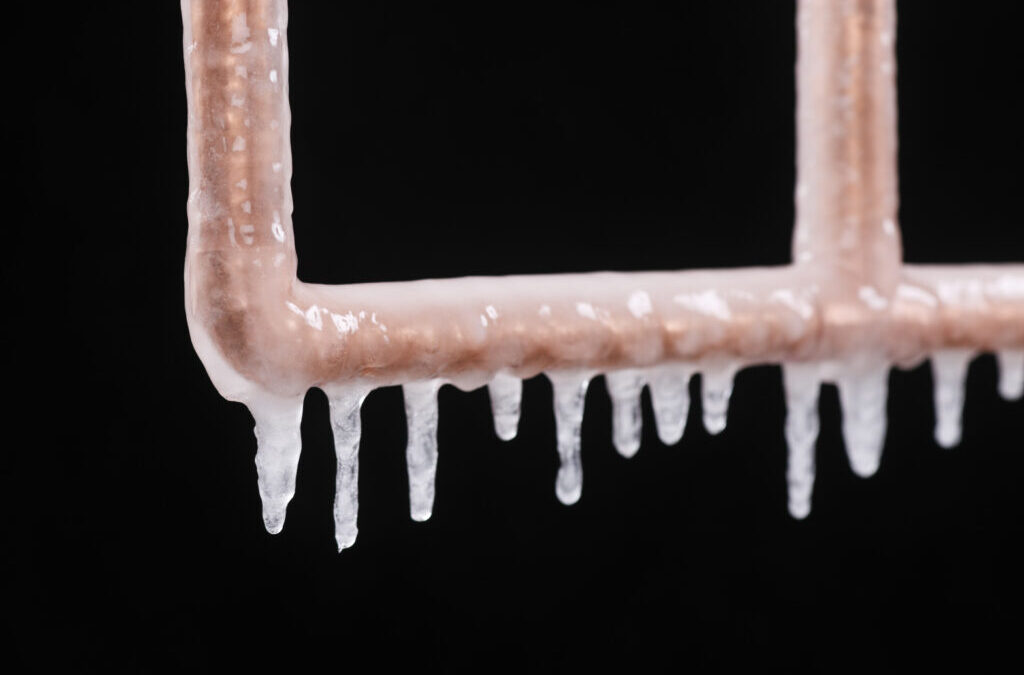As the winter season descends upon Menlo Park, the plummeting temperatures bring with them the potential for an array of household issues, chief among them being the risk of frozen pipes. Left unchecked, these icy intruders can cause significant damage to your home’s plumbing system, leading to inconvenient disruptions and costly repairs. To counteract this frosty foe, it’s crucial to understand how to winterize your home’s plumbing system effectively.
From insulation techniques to smart home devices, we will explore a spectrum of methods geared towards ensuring your pipes remain unfrozen and your home, damage-free. Knowledge is the first step towards prevention; equip yourself with the necessary insights to protect your home this winter.
A Comprehensive Guide to Protect Your Pipes from Freezing
1. Insulating Pipes: Protect Your Plumbing with Proper Insulation
One of the most effective ways to prevent frozen pipes is to ensure they are adequately insulated. Pipe insulation is designed to keep the heat within the pipes, reducing the chances of the water inside freezing.
The most common insulation materials for pipes include foam pipe insulation, fiberglass insulation, and heat tape. Foam pipe insulation is the easiest to install, as it generally comes pre-slit and can be easily wrapped around the pipes. Heat tape, on the other hand, is an electrical heating cable that can be wrapped around the pipes and then plugged in to maintain a consistent pipe temperature.
When insulating your pipes, it’s essential to focus on areas that are most susceptible to freezing. These areas include unheated spaces like crawlspaces, garages, and basements, as well as exterior walls where pipes are exposed to cold temperatures.
2. Sealing Drafts: Keep the Cold Weather Out and Your Pipes Safe
Drafts in your home can cause the temperature to drop significantly, making it easier for pipes to freeze. To protect your plumbing system, it’s vital to identify and seal drafty areas.
Start by inspecting your home’s doors, windows, electrical outlets, and entrance points for utility lines. If you detect any drafts, use weatherstripping, caulk, or expanding foam to seal off those areas.
Additionally, ensure that any vents or openings in your attic, crawlspaces, or basement are adequately sealed, as these areas can also be a source of drafts and cold air entering your home. By eliminating drafts and maintaining a consistent temperature inside your home, you reduce the risk of frozen pipes.
3. Outdoor Faucet Care: Winterizing for Long-term Protection
Outdoor faucets and hoses are vulnerable to freezing temperatures, which can result in damage to the indoor plumbing system if not appropriately winterized.
Before the winter season begins, it’s important to shut off the water supply to your outdoor faucets and remove any attached hoses. Water should be drained from both the faucets and hoses. To further protect your outdoor faucets, you can install faucet covers, which provide an additional layer of insulation and keep cold air out.
4. Keeping Your Thermostat Steady: Consistency Matters During Winter Months
Maintaining a consistent indoor temperature is crucial in preventing frozen pipes. Effective indoor temperature management ensures that heat is maintained throughout the house, preventing water from freezing within pipes in colder areas of your home.
Setting your thermostat no lower than 55°F during the winter months can help to maintain a safe temperature level in your home. It’s also helpful to open cabinet doors under sinks to allow warm air circulation around the pipes.
5. Preparing for Vacations: Winterizing Your Home While You’re Away
If you plan to be away from your home during the winter months, it’s essential to take steps to winterize your plumbing system.
Before leaving, set the thermostat to a temperature no lower than 55°F and turn off the water supply to your home. Open all faucets and drain the remaining water from the pipes. You should also, if possible, drain your water heater and shut off the water supply to any appliances that use water.
Taking these measures can help to avoid potential plumbing disasters, such as frozen pipes and water damage, while you’re away enjoying your vacation.
Proactive Measures to Insulate Your Home Plumbing
So, as winter sets in Menlo Park, homeowners are advised to take proactive measures to protect their plumbing systems. It’s clear that a little preparation can go a long way in preventing frozen pipes and the problems they bring. Armed with the knowledge and tips provided in this article, homeowners can confidently face the winter season, knowing their plumbing system is well-protected.
For professional support and guidance in winterizing your home’s plumbing system, rely on Shoreway Plumbing. Contact our licensed plumbers in California to learn more about our services and schedule an appointment today!

